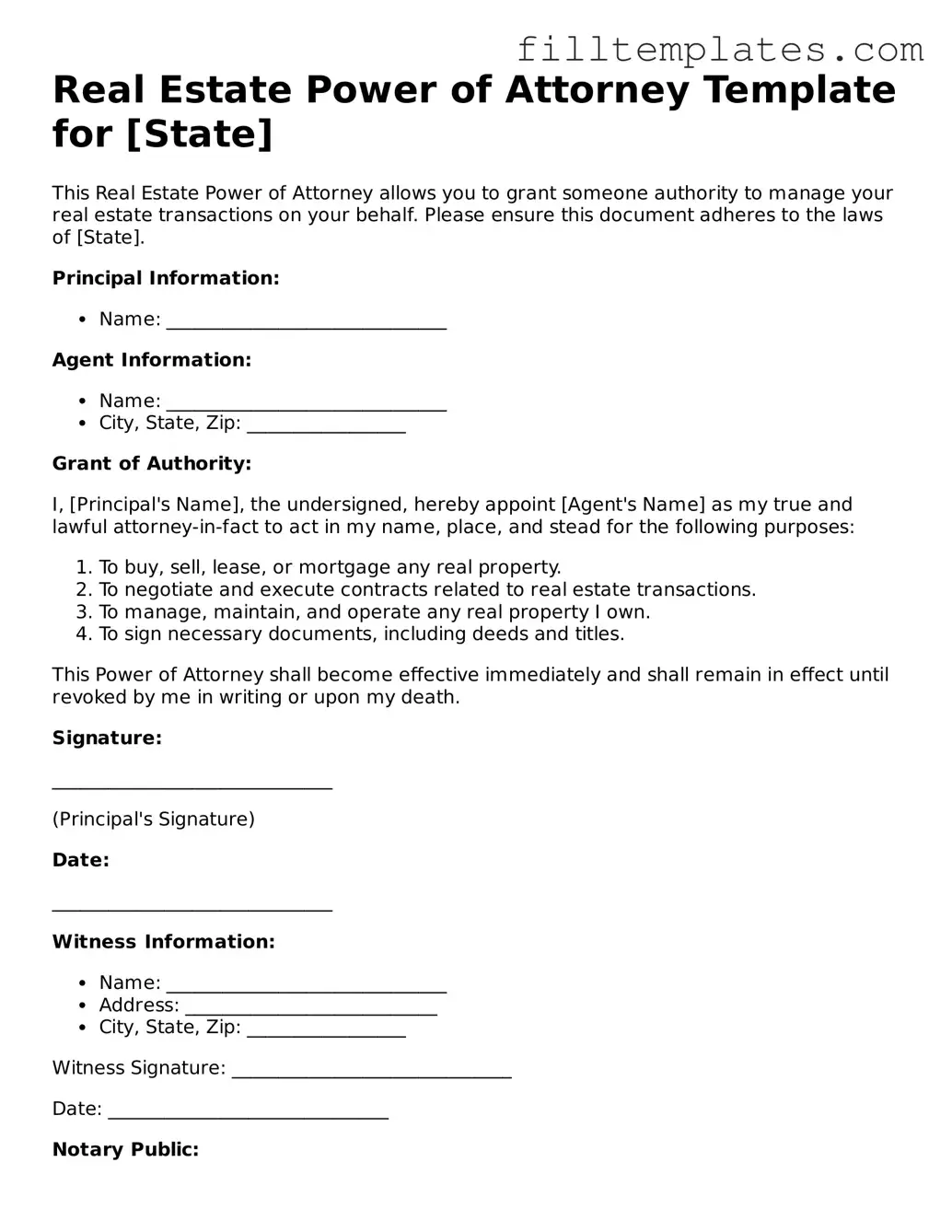Real Estate Power of Attorney Template for [State]
This Real Estate Power of Attorney allows you to grant someone authority to manage your real estate transactions on your behalf. Please ensure this document adheres to the laws of [State].
Principal Information:
- Name: ______________________________
Agent Information:
- Name: ______________________________
- City, State, Zip: _________________
Grant of Authority:
I, [Principal's Name], the undersigned, hereby appoint [Agent's Name] as my true and lawful attorney-in-fact to act in my name, place, and stead for the following purposes:
- To buy, sell, lease, or mortgage any real property.
- To negotiate and execute contracts related to real estate transactions.
- To manage, maintain, and operate any real property I own.
- To sign necessary documents, including deeds and titles.
This Power of Attorney shall become effective immediately and shall remain in effect until revoked by me in writing or upon my death.
Signature:
______________________________
(Principal's Signature)
Date:
______________________________
Witness Information:
- Name: ______________________________
- Address: ___________________________
- City, State, Zip: _________________
Witness Signature: ______________________________
Date: ______________________________
Notary Public:
State of [State]
County of ______________________________
Subscribed and sworn before me this ___ day of __________, 20__.
______________________________
(Notary Public Signature)
My commission expires: _______________
